Inauguration 6 September 1898 Role Queen of the Netherlands | Predecessor William III Name Wilhelmina the | |
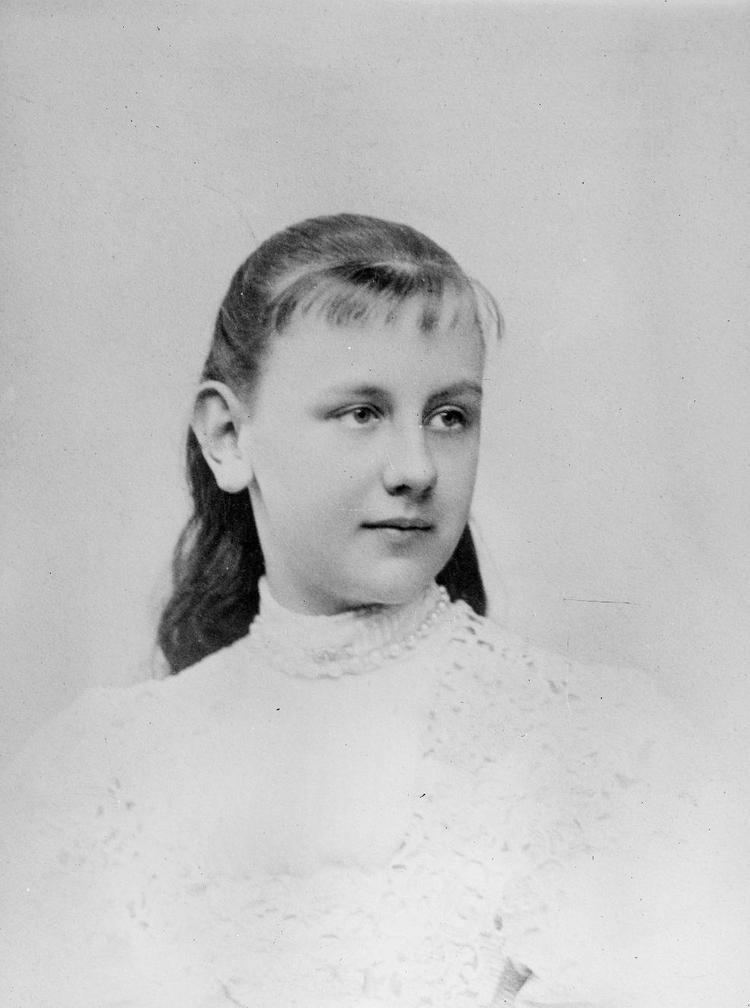 | ||
Reign 23 November 1890 –4 September 1948 Full name Wilhelmina Helena Pauline Maria Spouse Prince Henry, Duke of Mecklenburg-Schwerin (m. 1901–1934) Parents Emma of Waldeck and Pyrmont, William III of the Netherlands Children Juliana of the Netherlands Similar People Juliana of the Netherlands, Beatrix of the Netherlands, William III of the Netherlands, Emma of Waldeck and Pyrm, Prince Bernhard of Lippe | ||
A Tribute to Queen Wilhelmina of the Netherlands
Wilhelmina (Wilhelmina Helena Pauline Maria; 31 August 1880 – 28 November 1962) was Queen of the Kingdom of the Netherlands from 1890 to 1948. She reigned for nearly 58 years, longer than any other Dutch monarch. Her reign saw World War I and World War II, the economic crisis of 1933, and the decline of the Netherlands as a major colonial power. Outside the Netherlands she is primarily remembered for her role in World War II, in which she proved to be a great inspiration to the Dutch resistance.
Contents
- A Tribute to Queen Wilhelmina of the Netherlands
- Queen wilhelmina of the netherlands broadcasts in britain 1940
- Early life
- Enthronement and marriage
- Reign
- World War I
- Between the wars
- World War II
- Later years
- Titles styles and honours
- National honours
- Foreign honours
- Wilhelmina Mints
- References
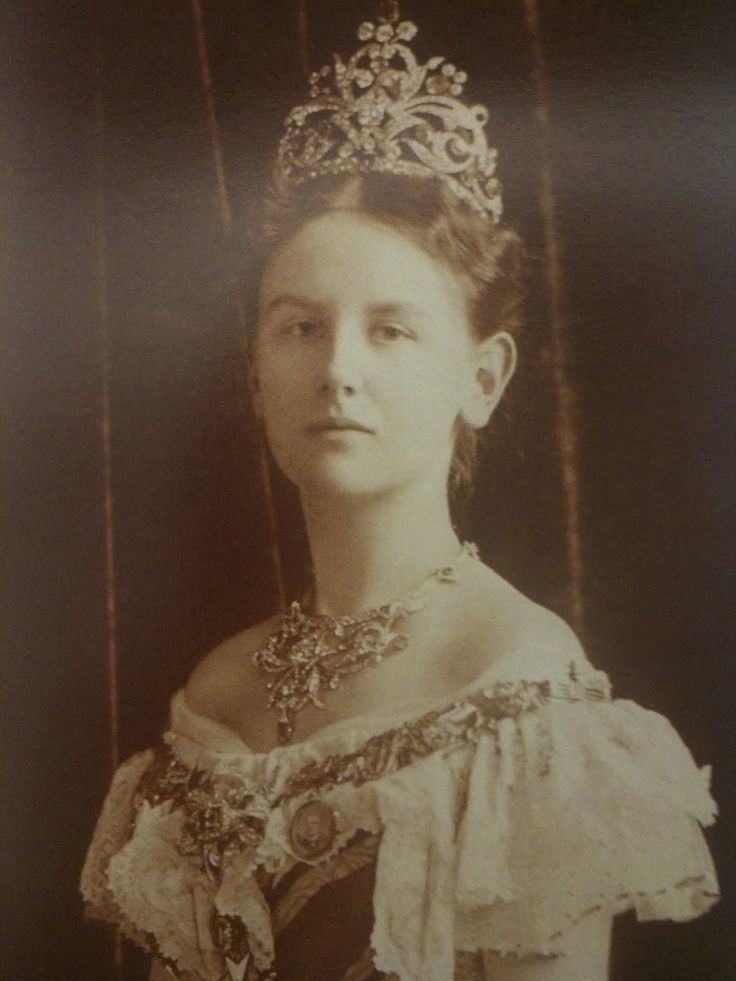
Queen wilhelmina of the netherlands broadcasts in britain 1940
Early life
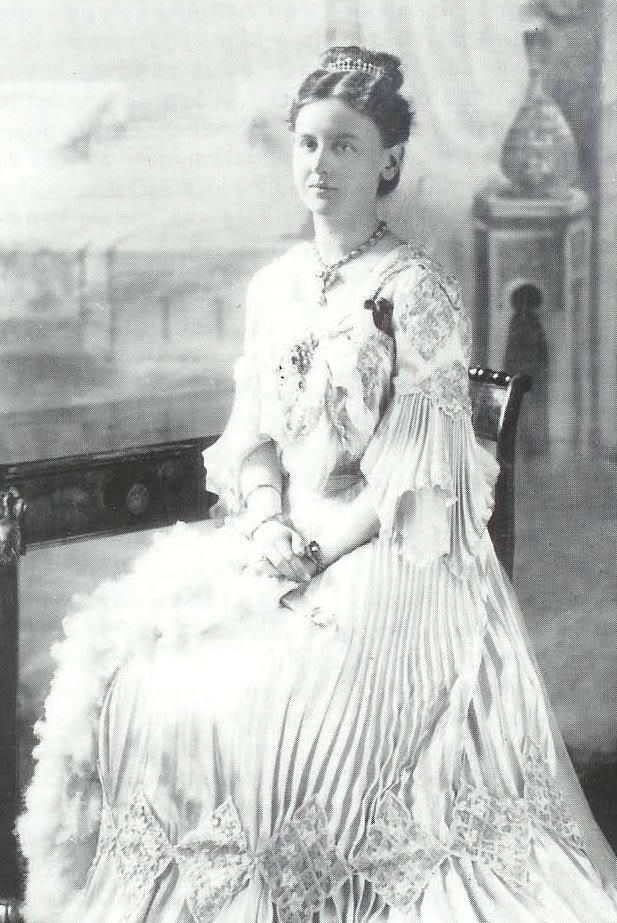
Princess Wilhelmina Helena Pauline Maria of the Netherlands, Princess of Orange-Nassau, was born on 31 August 1880 in The Hague, Netherlands. She was the only child of King William III and his second wife, Emma of Waldeck and Pyrmont. Her childhood was characterised by a close relationship with her parents, especially with her father, who was 63 years of age when she was born.
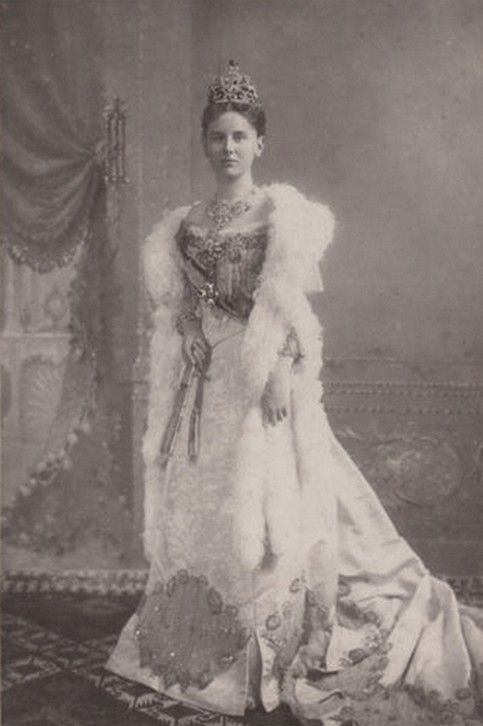
King William III had three sons with his first wife, Sophie of Wurttemberg. However, when Wilhelmina was born, William had already outlived two of them and only the childless Prince Alexander and the King's uncle Prince Frederick of the Netherlands were alive, so under the Semi-Salic system of inheritance that was in place in the Netherlands until 1887, she was third in line to the throne from birth. When Prince Frederick died a year later in 1881, she became second in line. When Wilhelmina was four, Alexander died and the young girl became heir presumptive.
King William III died on 23 November 1890. Although 10-year-old Wilhelmina became queen of the Netherlands instantly, her mother, Emma, was named regent.
In 1895, Queen Wilhelmina visited Queen Victoria of the United Kingdom, who penned an evaluation in her diary:
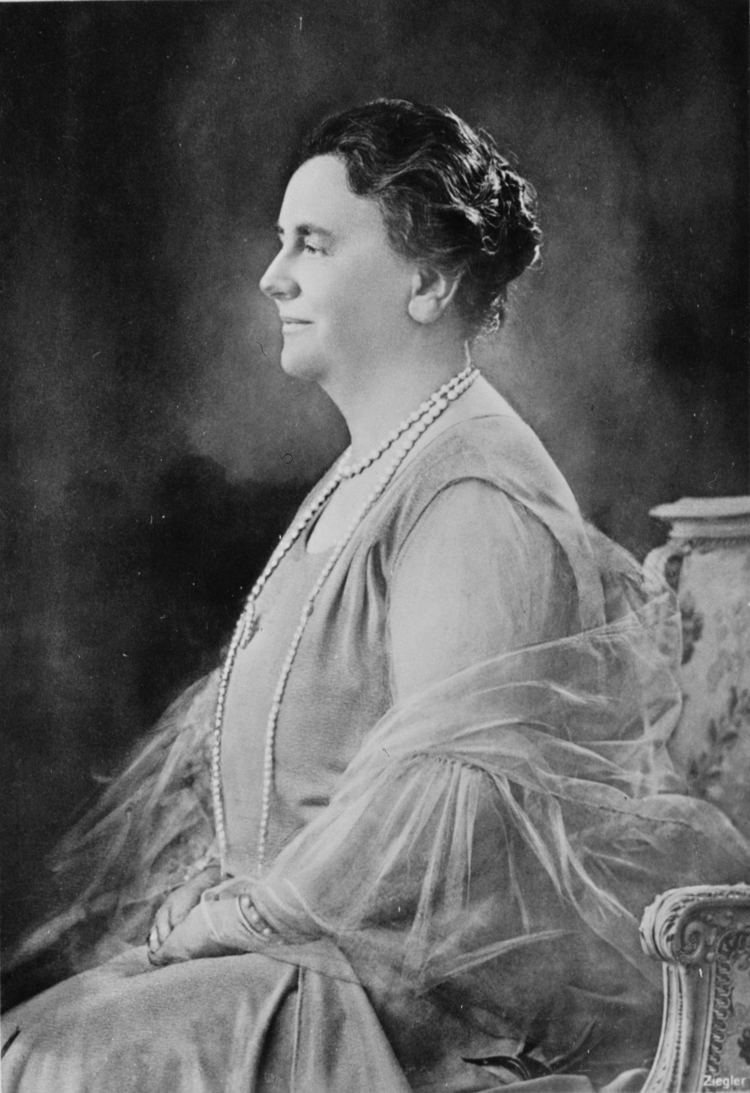
The young Queen ... still has her hair hanging loose. She is slender and graceful, and makes an impression as a very intelligent and very cute girl. She speaks good English and knows how to behave with charming manners.
Enthronement and marriage

Wilhelmina was enthroned on 6 September 1898. On 7 February 1901 in The Hague, she married Duke Henry of Mecklenburg-Schwerin. Nine months later, on 9 November, Wilhelmina suffered a miscarriage, and on 4 May 1902 she gave birth to a premature stillborn son. Her next pregnancy ended in another miscarriage on 23 July 1906. During this time period, Wilhelmina's heir presumptive was her first cousin once removed William Ernest, Grand Duke of Saxe-Weimar-Eisenach, and next in line was his aunt (and Wilhelmina's cousin) Princess Marie Alexandrine of Saxe-Weimar-Eisenach. As it was assumed that the former would renounce his claim to the Dutch throne, and that the latter was too elderly and sickly to become Queen, Marie Alexandrine's eldest son Prince Heinrich XXXII Reuss of Kostritz stood in line to succeed Wilhelmina, assuming she had no surviving children. Heinrich was a German prince with close associations with the Imperial family and the military; and there were fears that were the Queen to remain childless, the Dutch Crown "was bound to pass into the possession of a German prince, whose birth, training, and affiliations would naturally have led him to bring Holland [sic] within the sphere of the German Empire, at the expense of her independence, both national and economic", according to one contemporary publication. The birth of Juliana, on 30 April 1909, was met with great relief after eight years of childless marriage. Wilhelmina suffered two further miscarriages on 23 January and 20 October 1912.
Reign

Wilhelmina was well aware what was expected of her by the Dutch people and their elected representatives. At the same time, she was a strong-willed and forceful personality who spoke and acted her mind. These qualities showed up early in her reign when, at the age of 20, Queen Wilhelmina ordered a Dutch warship, HNLMS Gelderland, to South Africa to evacuate Paul Kruger, the embattled President of the Transvaal.
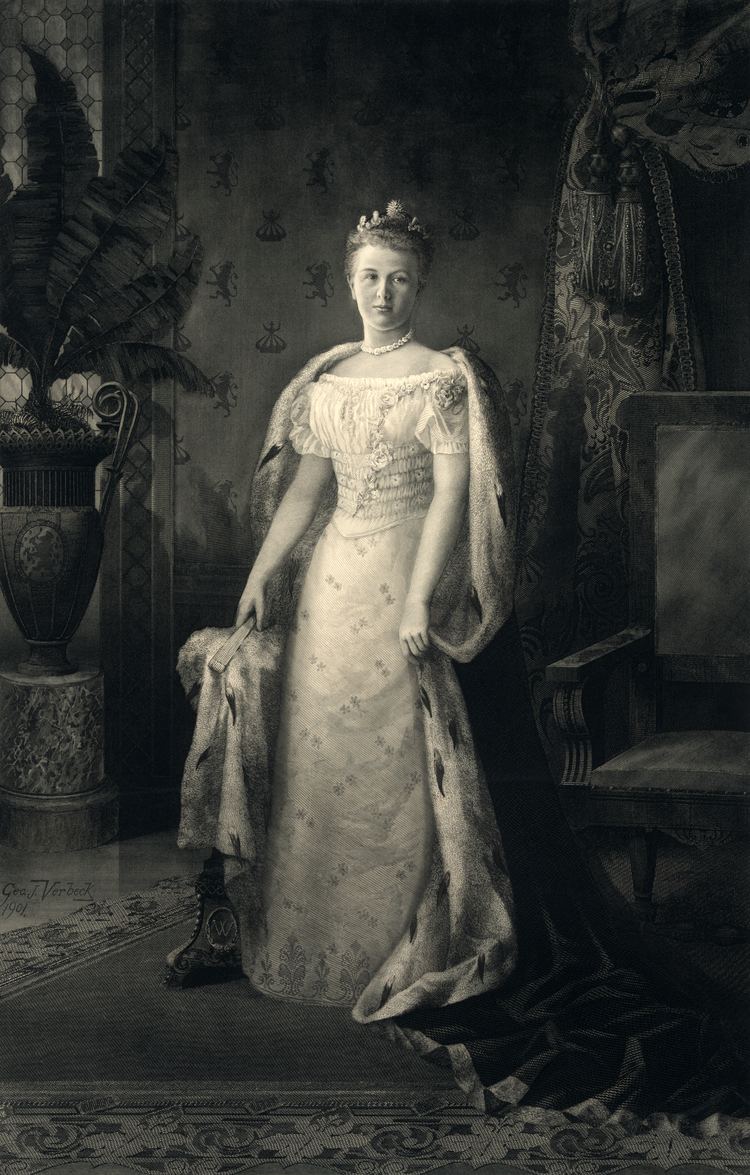
Wilhelmina had a stern dislike of the United Kingdom partly as a result of the annexation of the republics of Transvaal and Orange Free State in the Boer War. The Boers were descendants of early Dutch colonists, to whom Wilhelmina and the people of the Netherlands felt very closely linked. In conversation with her former governess Elisabeth Saxton Winter, she once teasingly referred to the Boer soldiers as "excellent shots". She was not amused to hear that a Dutch medical relief team was planning to accommodate the needs of both Boer and British wounded soldiers. Nevertheless, in 1940, King George VI sent the warship HMS Hereward, to rescue Wilhelmina, her family and her Government and bring them to safety to the United Kingdom, which offered the Netherlands facilities including broadcasting time on the BBC.
Queen Wilhelmina also had a keen understanding of business matters and her investments made her the world's richest woman, as well as the world's first female billionaire (in United States dollars).
Before the First World War started, the young Wilhelmina visited the powerful German Emperor Wilhelm II. The Emperor thought he could impress the queen of a relatively small country by telling her, "My guards are seven feet tall and yours are only shoulder-high to them." Wilhelmina smiled politely and replied, "Quite true, Your Majesty, your guards are seven feet tall. But when we open our dikes, the water is ten feet deep!"
World War I
The Netherlands remained neutral during World War I. However, the Allies included the Netherlands in their blockade of Germany, intercepting all Dutch ships and severely restricting Dutch imports to ensure goods could not be passed on to Germany.
Wilhelmina was a "soldier's queen"; being a woman, she could not be Supreme Commander, but she nevertheless used every opportunity she had to inspect her forces. On many occasions she appeared without prior notice, wishing to see the reality, not a prepared show. She loved her soldiers, and was very unhappy with most of her governments, which were always eager to cut the military budget. Wilhelmina wanted a small but well trained and equipped army.
In the war, she felt she was a "Queen-On-Guard". She was always wary of a German attack, especially in the beginning. However, the chief violation of Dutch sovereignty was the Allied blockade.
Civil unrest gripped the Netherlands after the war, spurred by the 1917 Bolshevik revolution in Russia. Socialist leader Pieter Jelles Troelstra wanted to abolish the existing government and the monarchy. Instead of a violent revolution, he hoped to do this by winning control of Parliament in an election, supported by the working class. However, the popularity of the young Queen helped restore confidence in the government. Wilhelmina brought about a mass show of support by riding with her daughter through the crowds in an open carriage.
Furthermore the Russian revolution cost her almost 20% of her financial assets, forcing her to entertain at a quite different level than before the war.
At the end of World War I, Kaiser Wilhelm fled to the Netherlands, where he was granted political asylum, partly owing to his familial links with Queen Wilhelmina. In response to Allied efforts to get their hands on the deposed Kaiser, Wilhelmina called the Allies' ambassadors to her presence and lectured them on the rights of asylum.
Between the wars
During the 1920s and 1930s, the Netherlands began to emerge as an industrial power. Engineers reclaimed vast amounts of land that had been under water by building the Zuiderzee Works. In 1934, both Wilhelmina's mother Queen Emma and her husband, Prince Hendrik, died.
Most of the 1930s were also occupied by the need to find a suitable husband for Juliana. This was a difficult task since Wilhelmina was very religious, and insisted that her daughter's hand be given to a Protestant of royal birth. Several prospects from the United Kingdom and Sweden either declined or were turned down by Juliana. Finally, Wilhelmina found a suitable match for her daughter in Prince Bernhard of Lippe-Biesterfeld, a German aristocrat. The marriage initially drew some controversy due to rumours that Bernhard was pro-Nazi. It was subsequently confirmed that he had indeed been a member of the Nazi Party and of the so-called Reiter-SS (SS Cavalry Corps), as was proved by the Dutch national institute for war documentation, NIOD.
In 1939, the government proposed a refugee camp near the city of Apeldoorn for German Jews fleeing the Nazi regime. Wilhelmina intervened, as she felt the planned location was "too close" to her summer residence. If indeed spies were to be among the fugitives, they would be within walking distance of Het Loo Palace. The camp was finally erected about 10 km from the village of Westerbork.
World War II
On 10 May 1940, Germany invaded the Netherlands. There is an ongoing debate about the departure of the Queen and the royal family. Some say that an evacuation to the United Kingdom of the royal family had been planned some time in advance, since at least the end of 1939. Wilhelmina and her family fled The Hague, and she boarded HMS Hereward, a British destroyer which was to take her across the North Sea. Others say she boarded the destroyer with the intent of going to the Dutch province of Zeeland, which had not yet been conquered at the time. However, along the journey, it became clear that due to advancing German forces, Zeeland was not safe either, forcing the destroyer to sail for the United Kingdom. In any case, she arrived in the United Kingdom on May 13, planning to return to the Netherlands as soon as possible.
The Dutch armed forces in the Netherlands, apart from those in Zeeland, surrendered on 15 May. In Britain, Queen Wilhelmina took charge of the Dutch government in exile, setting up a chain of command and immediately communicating a message to her people.
Relations between the Dutch government and the Queen were tense, with mutual dislike growing as the war progressed. Wilhelmina went on to be the most prominent figure, owing to her experience and knowledge. She was also very popular and respected among the leaders of the world. The government did not have a parliament to back them and had few employees to assist them. The Dutch prime minister, Dirk Jan de Geer, believed the Allies would not win and intended to open negotiations with Germany for a separate peace. Therefore Wilhelmina sought to remove De Geer from power. With the aid of a minister, Pieter Gerbrandy, she succeeded.
During the war her photograph was a sign of resistance against the Germans. Like Winston Churchill, Queen Wilhelmina broadcast messages to the Dutch people over Radio Oranje.
The Queen called Adolf Hitler "the arch-enemy of mankind". Her late-night broadcasts were eagerly awaited by her people, who had to hide in order to listen to them illegally. An anecdote published in her New York Times obituary illustrates how she was valued by her subjects during this period:
Although celebration of the Queen's birthday was forbidden by the Germans, it was commemorated nevertheless. When churchgoers in the small fishing town of Huizen rose and sang one verse of the Dutch national anthem, Wilhelmus van Nassauwe, on the Queen's birthday, the town paid a fine of 60,000 guilders.
Queen Wilhelmina visited the United States from 24 June to 11 August 1942 as guest of the U.S. government. She vacationed in Lee, Massachusetts, and visited New York City, Boston, and Albany, New York. In the latter city she attended the 300th anniversary celebration of the First Church in Albany, the city's oldest, established by Dutch settlers in the 17th century. She addressed the U.S. Congress on 5 August 1942, and was the first queen to do so.
Queen Wilhelmina went to Canada in 1943 to attend the christening of her grandchild Princess Margriet on 29 June 1943 in Ottawa and stayed awhile with her family before returning to the United Kingdom.
During the war, the Queen was almost killed by a bomb that took the lives of several of her guards and severely damaged her country home near South Mimms in England. In 1944, Queen Wilhelmina became only the second woman to be inducted into the Order of the Garter. Churchill described her as the only real man among the governments-in-exile in London.
In England, she developed ideas about a new political and social life for the Dutch after the liberation. She wanted a strong cabinet formed by people active in the resistance. She dismissed De Geer during the war and installed a prime minister with the approval of other Dutch politicians. The Queen "hated" politicians, instead stating a love for the people. When the Netherlands was liberated in 1945 she was disappointed to see the same political factions taking power as before the war. Before the end of the war, in mid-March 1945, she travelled to the Allied occupied areas of the south of the Netherlands, visiting the region of Walcheren and the city of Eindhoven where she received a rapturous welcome from the local population.
Shortly after the war, Queen Wilhelmina wanted to award the Polish Parachute Brigade for their actions during Operation Market Garden and wrote the government a request. However, the Minister of Foreign Affairs, Eelco van Kleffens, opposed the idea. He thought an award for the Poles would upset the relations with the ‘Big Three’ and harm national interests. The Polish Parachute Brigade was awarded the Military Order of William on May 31, 2006 after 61 years.
Following the end of World War II, Queen Wilhelmina made the decision not to return to her palace but to move into a mansion in The Hague, where she lived for eight months. She travelled through the countryside to motivate people, sometimes using a bicycle instead of a car. However, in 1947, while the country was still recovering from World War II, the revolt in the oil-rich Dutch East Indies saw sharp criticism of the Queen by the Dutch economic elite.
Around the same time, Wilhelmina's health started failing her, forcing her to cede her monarchial duties to Juliana temporarily towards the end of 1947 (14 October through 1 December). She considered abdication, but Juliana pressed her to stay on for the stability of the nation, urging her to stay on the throne until 1950 so she could celebrate her diamond jubilee. Wilhelmina had every intention of doing so, but exhaustion forced her to relinquish monarchial duties to Juliana again on 12 May 1948. The timing was unfortunate, as it left Juliana to deal with the early elections caused by the ceding of the Indonesian colonies.
Dismayed by the return to pre-war politics and the pending loss of Indonesia, Wilhelmina abdicated on 4 September 1948.
Later years
As of 1948, Wilhelmina was the only survivor of the 16 European kings and one queen who were sitting on their thrones at the time of her coronation in 1898. The Dutch Royal Family was also one of seven European royal houses remaining in existence.
On 4 September 1948, after a reign of 57 years and 286 days, Wilhelmina abdicated in favour of her daughter Juliana, because of advancing age and illness which had already caused two regencies, and the strain of the war years. She was thenceforward styled "Her Royal Highness Princess Wilhelmina of the Netherlands". After her reign, the influence of the Dutch monarchy began to decline but the country's love for its royal family continued. No longer queen, Wilhelmina retreated to Het Loo Palace, making few public appearances until the country was devastated by the North Sea flood of 1953. Once again she travelled around the country to encourage and motivate the Dutch people.
During her last years she wrote her autobiography entitled Eenzaam, maar niet alleen (Lonely but Not Alone), in which she gave account of the events in her life, and revealed her strong religious feelings and motivations.
Wilhelmina died in Het Loo Palace at the age of 82 on 28 November 1962, and was buried in the Dutch Royal Family crypt in the Nieuwe Kerk in Delft, on 8 December. The funeral was, at her request and contrary to protocol, completely in white to give expression to her belief that earthly death was the beginning of eternal life.
According to German Salic law, the House of Orange-Nassau-Dietz became extinct upon her death (similar to the end of the House of Hanover in the United Kingdom with Queen Victoria), but this rule is not recognised by royal Dutch succession laws.
Titles, styles, and honours
Wilhelmina's regnal title from her accession to her marriage was: "Wilhelmina, by the Grace of God, Queen of the Netherlands, Princess of Orange-Nassau, etc, etc, etc." She adopted her husband's ducal title upon marriage as customary, becoming also a Duchess of Mecklenburg.
National honours
Foreign honours
Wilhelmina Mints
In 1892 the company Fortuin celebrated its 50th anniversary by producing mints with the image of the 12-year-old Princess Wilhelmina, which have continued in production since then. Among Dutch sweets, these mints have become the "most Dutch of all".
